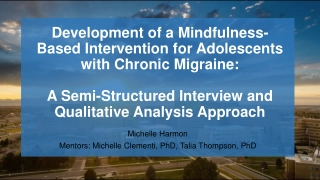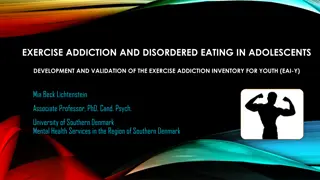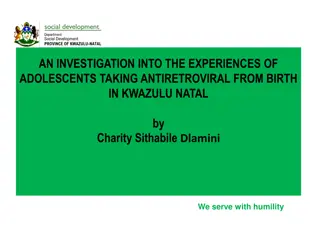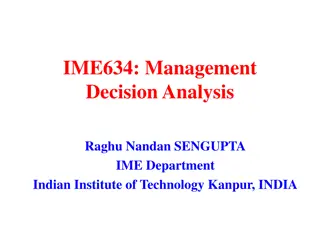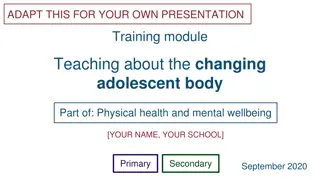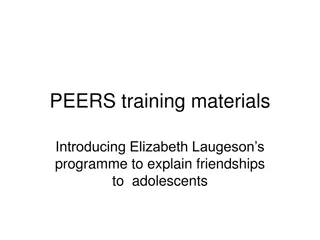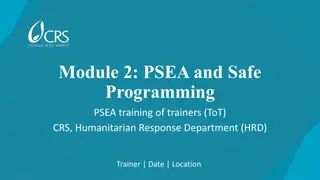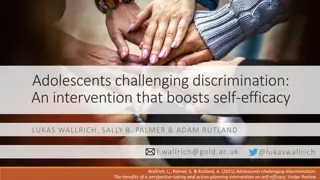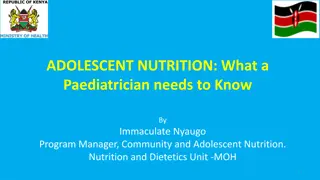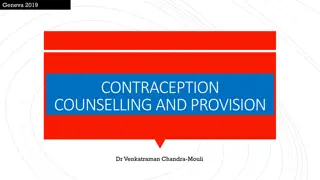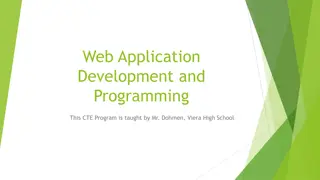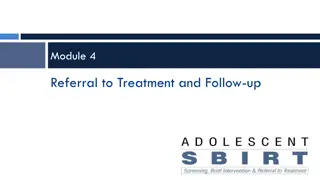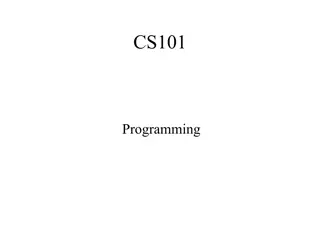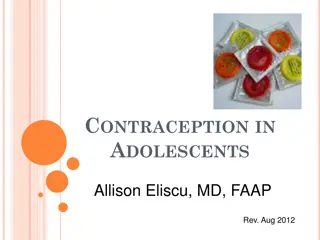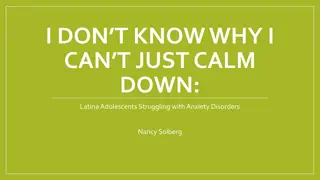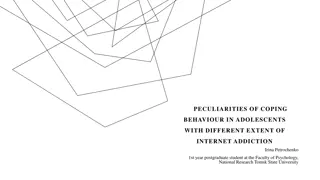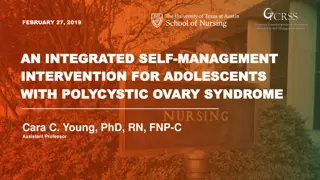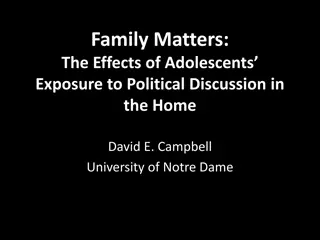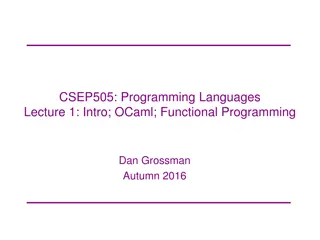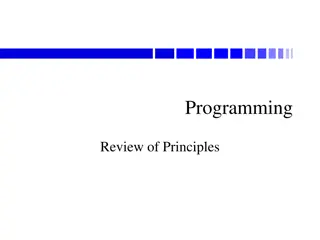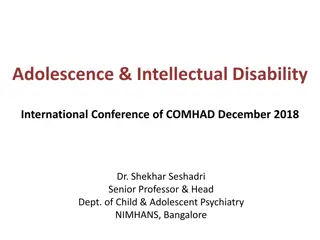Training Module: Understanding and Engaging with Adolescents in Programming
This training module focuses on enhancing facilitators' understanding of adolescents aged 10-17, addressing knowledge gaps, reaching less visible adolescents, and developing action plans to better support them. The content includes discussions, activities, and guidance on investigating adolescents' situations while emphasizing the importance of confidentiality and child protection. Strategies for gathering essential information and listening to adolescents are highlighted throughout the module.
Download Presentation

Please find below an Image/Link to download the presentation.
The content on the website is provided AS IS for your information and personal use only. It may not be sold, licensed, or shared on other websites without obtaining consent from the author.If you encounter any issues during the download, it is possible that the publisher has removed the file from their server.
You are allowed to download the files provided on this website for personal or commercial use, subject to the condition that they are used lawfully. All files are the property of their respective owners.
The content on the website is provided AS IS for your information and personal use only. It may not be sold, licensed, or shared on other websites without obtaining consent from the author.
E N D
Presentation Transcript
Understanding and using the kit: Training of trainers for facilitators The Adolescent Development and Participation Module 2: Reaching and including adolescents Section Priya Marwah, Adolescents in Emergencies and Peacebuilding Specialist Ellen Fransen, Programme Assistant Juliet Young, Consultant
Discussion: What are some of our knowledge gaps with respect adolescents ages 10-17 in our programming area? Which adolescents ages 10-17 are less visible in our area? What would it be helpful to know about adolescents situations as we plan and facilitate programmes to better reach and support them?
Activity: Review the Programme Coordinators Guidance, Investigating adolescents situations, Questions for investigating adolescents tool. Try to answer all of the questions in each section in as much detail as you can, based on your knowledge of adolescents situation in our programming context
Action planning: What are some key gaps in our information about adolescents that we will work to fill? What are some strategies we will use to gather that information? Listen to adolescents
Do no harm! Remember . It is our responsibility to ensure the confidentiality of the information you have been entrusted with. Sensitive information must be protected and shared only with those people (service providers, family, etc.) who need the information for the best interest of the child. Shared information should be stripped of any details of the source, unless required to ensure appropriate action (with written consent from the source). See Programme Coordinators Guidance: Investigate adolescents situation the Child Protection Rapid Assessment Toolkit, and the Minimum Standards for Child Protection in Humanitarian Response for more guidance on protecting and upholding the rights of children while gathering and using information on their situations. (Hyperlinks to those resources can be found in the Programme Coordinators Guidance)
Discussion/activity: Which adolescents will we reach through your programme using the resources in the Adolescent Kit? Which groups/categories of adolescents are we reaching through our programme? Which groups/categories are we struggling to reach so they can benefit from our programme? Reach out to all adolescents
Discussion: What strategies are we already using to reach and engage adolescents? What new strategies could we use, especially to include those we are not reaching? Reach out to all adolescents
2.3 Setting targets and monitoring for inclusion
Discussion: What are some of the key vulnerable groups in our programme context who are not being sufficiently reached or included in your programme or intervention? Review the Setting enrolment targets tool in the Programme Guidance: Reach out and engage adolescents section. What categories of least-reached adolescents in our programme contexts could we add? Based on the data we have, what would be appropriate targets for the number of adolescents in each target we should aim to reach? OR What new data should we gather to set appropriate targets for how many adolescents in those categories we should reach?
Discussion/Activity: Identify vulnerable groups. Which groups of adolescents who are particularly vulnerable, marginalised or discriminated against in our community? Estimate their number and the percentage of the community they represent based on available information.
Discussion/Activity: Set targets. Set enrolment targets for each adolescent group, based on how many of them there are, what percentage of the community they make up and where they are located.
Do no harm! Remember . It is our responsibility to ensure the confidentiality of the information you have been entrusted with. Sensitive information must be protected and shared only with those people (service providers, family, etc.) who need the information for the best interest of the child. Shared information should be stripped of any details of the source, unless required to ensure appropriate action (with written consent from the source). See Programme Coordinators Guidance: Investigate adolescents situation the Child Protection Rapid Assessment Toolkit, and the Minimum Standards for Child Protection in Humanitarian Response for more guidance on protecting and upholding the rights of children while gathering and using information on their situations. (Hyperlinks to those resources can be found in the Programme Coordinators Guidance)
Discussion/Activity: Preparing to monitor adolescents attendance. How will we adapt this (or another) attendance monitoring tool? How will we prepare and support facilitators to use it (regularly and correctly)? How often will we gather and analyze attendance data for our programme to monitor whether we are meeting our enrolment targets, especially for those adolescents from marginalized and hard-to-reach groups?
Action planning: If we find that we are not meeting our enrolment targets, what actions can we take to reach and engage adolescents (especially those from hard-to-reach groups) in our progarmme ? Include all adolescents


